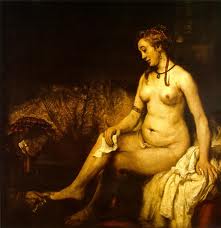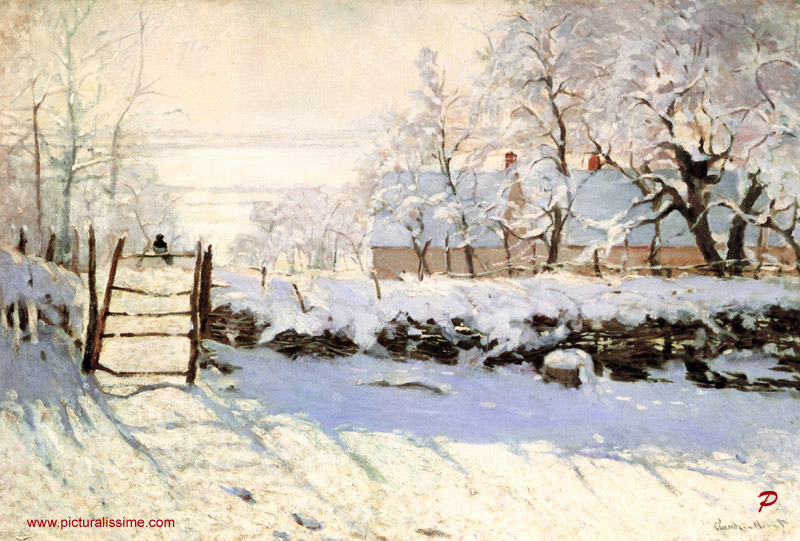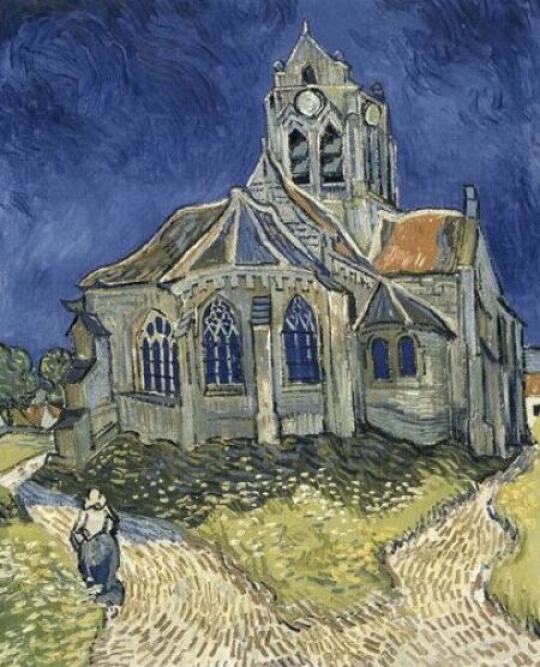While Hurricaine Sandy made her way through the Eastern United States this past week, I had my week off. The week began Friday morning with an 8:30h bus to the train station along with my fellow Marchutz students. Yes, yes, I did spend the beginning of my week off on a school-related excursion. It was probably the best way to spend my time, as I would soon discover.
Overall we were in Giverny for four nights, and we stayed in two houses which were like our hotels. There were things in the kitchen to eat for breakfast, we would go to the museum restaurant for lunch (I ate rabbit on Sunday, and though I won’t say it tastes exactly like chicken, it’s very close). The restaurant brought us dinner each evening, and of course there was lots of champagne and red wine. I had the whole basement suite to myself, though I really only used it to sleep.
On Friday evening we were introduced to American sculptor Greg Wyatt, who asked each of us for “biographical information”. I heard someone refer to the way he spoke about different ways of making sculptures and the thought processes behind it as “Shakespearean”. This guy is no joke. A comparison was later made between Greg and another sculptor who had recently visited (originally from the UK and now works in NY), given a talk to us in IAU, and then looked at some of the paintings on which we’d been working. This other guy (a college professor in the US) was asked about how he went about creating a particular sculpture. He mostly talked about how he wanted it to be in view of people below. When asked a similar question, Greg said he began by asking: “What element will the environment be? Earth, Water, Wind, or Fire?”
As he was talking I started to notice one of the members of our class who is in her 60’s, start taking notes furiously, as were my two art professors. I realized that I had brought my sketchbook and pencils so I started to do the same. Some things he said or mentioned were:
Art is an expression of curiosity and humility. The desire/ability to be an artist as a result of parenting or just basic will (i.e. nature vs. nurture). He gave the examples of Cézanne (whose parents were not artists), Michelangelo’s father (whose artistic inclinations were repressed), and recommended the first 50 pages of Mein Kampf, which apparently tells of the emotional pain suffered by a young Adolf who was not allowed to express himself through art. You have to form a knowledge base as well as an experience base. Keep a journal in which you write about art, preferably in French. Medievil perspective revolutionized the way in which artists represented perspective, whereas before, everything was side-by-side rather than overlapped. You should seek to create depth, even in yourself. The masters always kept extensive notes. The obvious is not so obvious. You need to strike a balance between discipline and the exuberance of making art. Befriend the materials. Always know what the goal is.
Here is something I hastily wrote down as he was speaking: “I thought there was a firewall [between being a practicing artist and being a professor], but this couldn’t be further from the truth…it’s all one. It’s how you apply creativity. When you read the journals of these masters, you find that they were always concerned with learning. They never stopped being students. They became better students.”
On Saturday we spent the day “befriending” clay by molding it into various shapes and noting their respective mobility as we rolled them down our square boards. Afterward we wire to create a skeleton which we would later cover in plaster (think Plaster Fun Time, but before the paint goes on, and if you aren’t careful you can get your skin infected). I made (or attempted to make) a sculpture of my hand.
On Sunday morning we visited Monet’s garden. We walked around the pond looking for things to draw. My professors said that in all the times they’d been here, they’d never seen the sky look the way it did, and thus they’d never seen the pond reflect in such a way. As we all noted as soon as we had arrived in Giverny, the sky was much more purple than Aix, and naturally cloudier, but it was relatively sunny during our sejour in the garden. As with Arles, there were a great deal of Japanese tourists visiting, seeing as Monet was highly influenced by Japanese art (just like Van Gogh). We spent the afternoon introducing ourselves to copper wire. The goal was to take something we saw in the garden and use it as an idea to make a three-dimensional image using the wire. There is no obvious way to go about this. I ended up making Lilly pads. Then we coated our sculptures in wax.
On Monday we began working on our final project. This was another copper wire sculpture to be covered in wax. At 11h we toured Monet’s house. Most notable were all the Japanese artworks on the walls. There were also photographs of Monet and some of his relatives. In his studio were dozens of his paintings; impressions of landscapes, people, buildings, and (most vividly to me) an exotic-looking tree. At the end of the day we presented our sculptures to one another. My model was some thick tall grass (I don’t actually know what this is called), and its reflection.
On Tuesday we got on a bus and went to Coubertin to visit the foundry in which Greg had some of his work. We saw how the process works, how different employees have different jobs in turning a sculpture into something durable. We also explored the nearby area, which of course contained many sculptures. Then it was back on the bus, and we made our way to Paris where we made our separate ways…




























